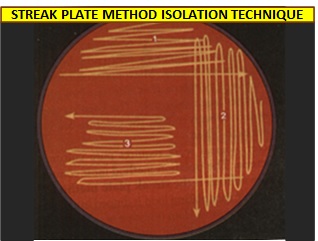Acid Fast Staining: An Overview
This article describes about Acid fast staining, Its principle, procedure, Components, safety precautions, Troubleshooting, applications and limitations. Enlisted Frequently asked questions with answers.
What is mean by Acid Fast Staining?
Acid Fast Staining is a laboratory technique used to identify and differentiate acid-fast bacteria from other bacterial species. It involves staining the bacteria with a special dye that penetrates the cell wall and then treating them with an acid-alcohol solution to differentiate them from other bacteria. This technique is useful for diagnosing tuberculosis and other mycobacterial infections.
Acid fast staining was first introduced by Paul Ehrlich in 1882 to stain the Mycobacterium tuberculosis, which causes tuberculosis. Since then, it has become an essential tool for the diagnosis of many bacterial infections, including leprosy, Johne’s disease, and nocardiosis. In this article, we will dive deep into the details of acid-fast staining, including its principles, procedure, applications, and limitations.
Principles of Acid Fast Staining
The principle behind acid fast staining is based on the unique chemical composition of the cell wall of acid fast bacteria. The cell wall of acid fast bacteria contains a high concentration of mycolic acid, which is responsible for the cell’s resistance to decolorization with acid-alcohol. The staining process involves four main steps:
Step 1: Primary Staining
The first step involves the application of the primary stain, which is usually carbol fuchsin, a basic dye. The dye penetrates the cell wall and binds to the mycolic acid, giving the bacteria a bright red color.
Step 2: Decolorization
The second step involves the removal of excess primary stain from non acid fast bacteria. This step is critical because it differentiates acid-fast bacteria from non-acid-fast bacteria. Decolorization is done using acid-alcohol, which removes the primary stain from non-acid-fast bacteria but does not affect the acid-fast bacteria.
Step 3: Counterstaining
The third step involves the application of a counterstain, usually methylene blue or brilliant green. The counterstain stains the decolorized non-acid-fast bacteria, giving them a contrasting color to the acid-fast bacteria, which remain red.
Step 4: Microscopic examination
The final step involves the examination of the stained bacteria under a microscope. Acid-fast bacteria appear red, while non-acid-fast bacteria appear blue or green.
Procedure of Acid Fast Staining
The procedure of acid-fast staining involves several steps, as mentioned below:
Step 1: Smear Preparation
The first step involves preparing a bacterial smear. A small amount of sample, such as sputum or tissue, is placed on a clean glass slide and air-dried. The slide is then heat-fixed to attach the bacteria to the slide.
Step 2: Primary Staining
The second step involves the application of the primary stain, which is usually carbol fuchsin. The slide is flooded with carbol fuchsin and heated using a Bunsen burner or a staining rack. The heating helps the stain penetrate the cell wall of the bacteria.
Step 3: Decolorization
The third step involves the application of acid-alcohol, which removes the primary stain from non-acid-fast bacteria. The slide is gently washed with water to remove excess acid-alcohol.
Step 4: Counterstaining
The fourth step involves the application of a counterstain, usually methylene blue or brilliant green. The counterstain stains the decolorized non-acid-fast bacteria.
Step 5: Microscopic Examination
The final step involves the examination of the stained bacteria under a microscope. Acid-fast bacteria appear red, while non-acid-fast bacteria appear blue or green.
Components Required for Acid fast Staining
To perform acid-fast staining, you will need the following components:
- Primary stain
- Decolorizing agent
- Counterstain
- Specimen
- Microscope slides
- Cover slips
- Microscope
- Heat source i.e. Bunsen burner or hot plate
- Staining tray
- Wash bottle or distilled water
Safety Precautions should be taken while Acid fast Staining :
By taking these safety precautions, laboratory personnel can minimize the risk of exposure to infectious materials and ensure a safe working environment for all.
To ensure safety while performing acid-fast staining, the following precautions should be taken:
- Always wear personal protective equipment, including gloves, lab coats, and safety glasses, when handling potentially infectious materials.
- Handle all specimens and staining reagents with care to prevent spills or splashes.
- Work in a well-ventilated area to avoid inhalation of any vapors or fumes.
- Heat-fix the specimen on the slide carefully using a Bunsen burner or hot plate to avoid burns or fires.
- Dispose of all used slides, cover slips, and staining reagents in a designated waste container.
- Wash your hands thoroughly with soap and water after handling potentially infectious materials.
- Follow established laboratory procedures for handling and disposing of infectious materials.
Troubleshooting’s for Acid Fast Staining Techniques :
Acid-fast staining is a complex staining technique, and sometimes, errors may occur during the staining process that can affect the quality of the results. Here are some common troubleshooting tips for acid-fast staining:
- Inadequate decolorization: If the decolorizing agent is not applied correctly, residual primary stain can remain in non-acid-fast bacteria, leading to false-positive results. To avoid this, make sure to use the decolorizing agent for the recommended time and rinse the slide thoroughly with water.
- Over-decolorization: Over-decolorization can result in false-negative results, where acid-fast bacteria are not stained. To avoid this, be sure to apply the decolorizing agent for the recommended time and check the slide under the microscope after each step of the staining process.
- Poor quality of the primary stain: The primary stain must be fresh and at the correct concentration to achieve accurate staining results. Always prepare the stain according to the recommended protocol and store it properly.
- Poor quality of the counterstain: The counterstain should be prepared fresh and at the correct concentration. If the counterstain is too strong or applied for too long, it can obscure the acid-fast bacteria, leading to false-negative results.
- Poor quality of the specimen: The quality of the specimen is crucial for accurate staining results. Make sure the specimen is properly collected, stored, and transported to the laboratory.
- Incorrect interpretation: Incorrect interpretation of staining results can also occur, particularly if the slides are not observed carefully under the microscope or if the observer is inexperienced. Always verify the staining results with a more experienced colleague or using alternative diagnostic methods.
Applications of Acid Fast Staining
Acid fast staining has numerous applications in clinical and research settings, including:
- Diagnosis of Tuberculosis: Acid fast staining is a rapid and effective method for detecting the presence of Mycobacterium tuberculosis, the causative agent of tuberculosis, in clinical specimens such as sputum, bronchoalveolar lavage fluid, and cerebrospinal fluid.
- Diagnosis of leprosy: Acid fast staining can also be used to diagnose leprosy, a chronic infectious disease caused by Mycobacterium leprae. The bacterium can be detected in skin biopsies or nasal secretions using acid-fast staining.
- Identification of other acid-fast bacteria: Acid fast staining is also useful for identifying other acid-fast bacteria, such as Mycobacterium avium complex and Mycobacterium kansasii, which can cause infections in immunocompromised individuals.
- Detection of bacterial contaminants: Acid fast staining can be used to detect bacterial contaminants in industrial products such as food, water, and cosmetics.
- Research purposes: Acid-fast staining is also used in research to study the cell wall structure and composition of acid-fast bacteria.
- Diagnosis of other bacterial infections : Acid fast staining is also used for the diagnosis of other bacterial infections, such as Johne’s disease and nocardiosis.
- Research purposes :Acid fast staining is also used in research to study the morphology and structure of bacterial cells, including their cell wall composition and thickness.
Limitations of Acid Fast Staining
Although acid fast staining is a powerful diagnostic tool, it has several limitations, including:
False positives
Acid fast staining can produce false-positive results due to the presence of other acid-fast bacteria, such as Nocardia and Rhodococcus.
False negatives
Acid fast staining can produce false-negative results in some cases, especially when the bacterial load is low, or the specimen is inadequately prepared or processed.
Limited sensitivity
Acid fast staining has limited sensitivity compared to other diagnostic methods, such as culture or molecular testing.
Frequently Asked Questions (FAQs) :
What is the difference between acid-fast bacteria and non acid fast bacteria?
Acid fast bacteria have a high concentration of mycolic acid in their cell wall, which makes them resistant to decolorization with acid-alcohol. Non-acid-fast bacteria do not have mycolic acid in their cell wall and are easily decolorized with acid-alcohol.
What is the primary stain used in acid fast staining?
The primary stain used in acid-fast staining is usually carbol fuchsin, a basic dye that binds to the mycolic acid in the cell wall of acid-fast bacteria.
Can acid-fast staining produce false positive results?
Yes, acid-fast staining can produce false-positive results due to the presence of other acid-fast bacteria, such as Nocardia and Rhodococcus.
What is the advantage of acid fast staining over other diagnostic methods?
Acid-fast staining is a simple, rapid, and inexpensive method that can be used for the rapid diagnosis of bacterial infections, especially tuberculosis and leprosy.
What are the limitations of acid fast staining?
The limitations of acid-fast staining include false positives, false negatives, and limited sensitivity compared to other diagnostic methods.



